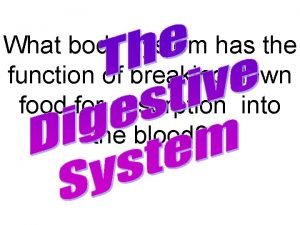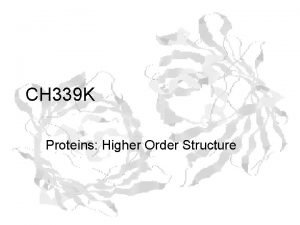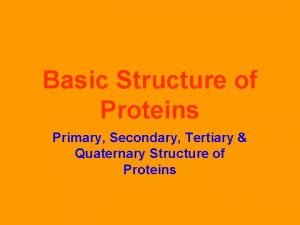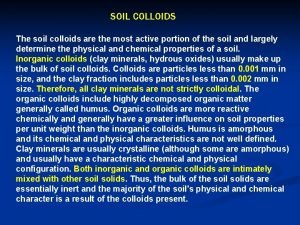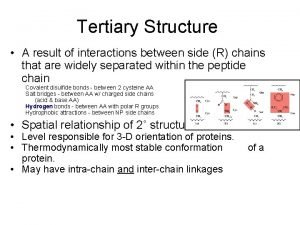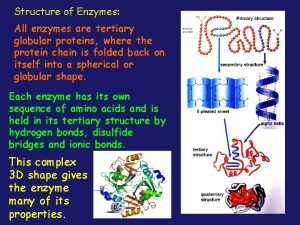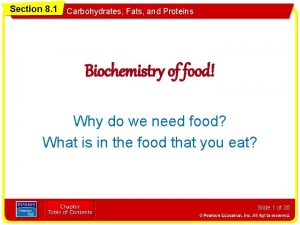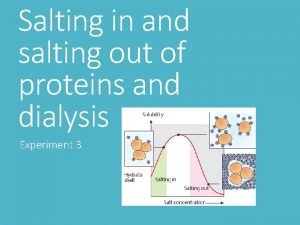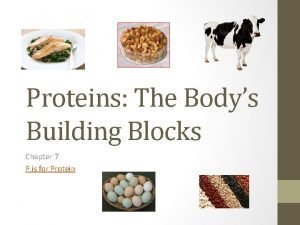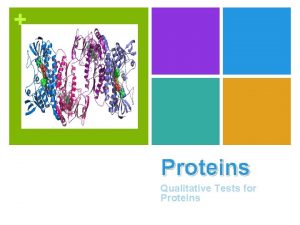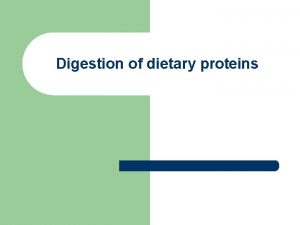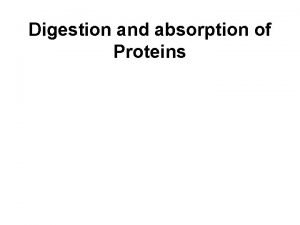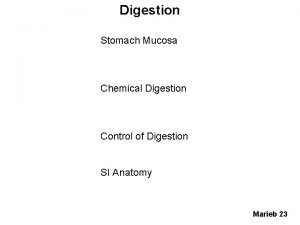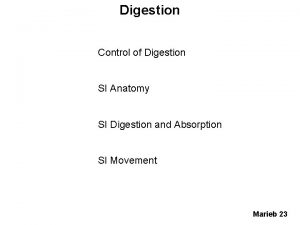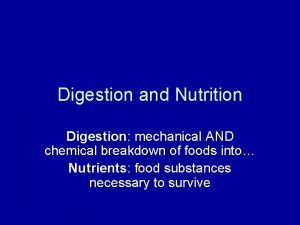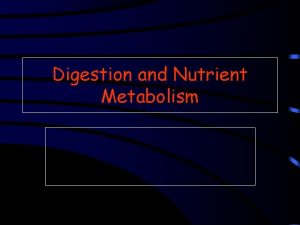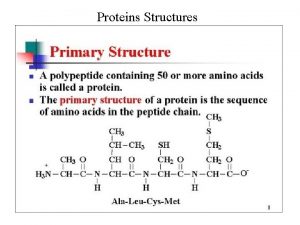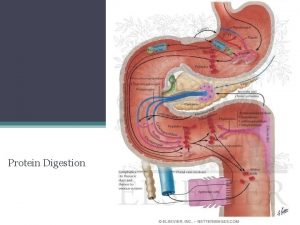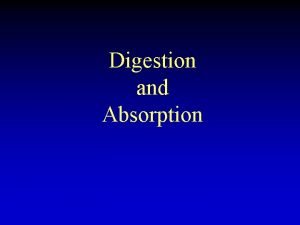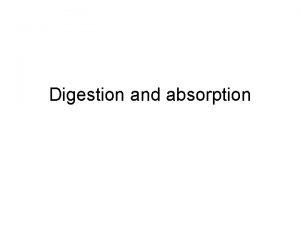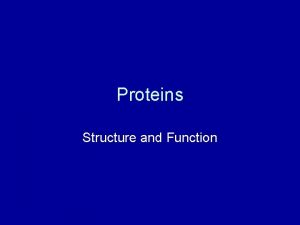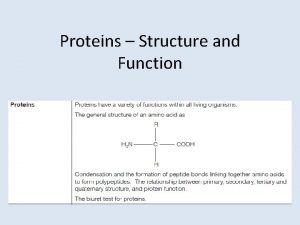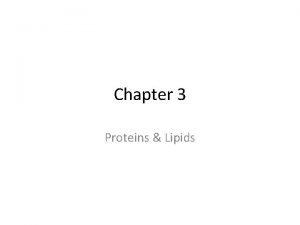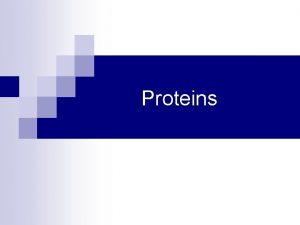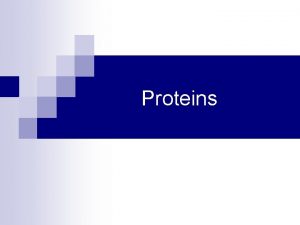Proteins Structure Formation Digestion Proteins are large important


















- Slides: 18

Proteins Structure, Formation & Digestion

• Proteins are large, important and complex molecules (polymers) found in our bodies • They are involved in most reactions in cells.

• Each protein within the body has a specific function. • The main functions of proteins in the body are structural, maintenance and regulation of life processes.

• Proteins which fulfil different roles in the body are formed by linking differing sequences of amino acids together. • Proteins can be classified as fibrous or globular • this structure is driven by hydrogen bonding within the protein molecule.

• Fibrous • Animal tissue • Skin, hair, nails • Muscle • Globular • Maintenance and regulation of life processes • Enzyme (amylase) • Hormones (insulin) • Transport (Haemoglobin) • Antibodies (immune system)

Proteins which are enzymes • An enzyme is a protein which is able to catalyse a biochemical reaction

• The shape of the active site allows specific reactants known as substrates to attach, like a lock and key. • Incorrect substrates are unable to fit the shape of the active site and are not changed.

Amino acids • Proteins are constructed from building blocks called amino acids. • Amino acid molecules have two functional groups – carboxyl group (-COOH) – amino group (-NH 2)

essential amino acids • The body cannot make all the amino acids required for body proteins and is dependent on dietary protein for supply of certain amino acids known as essential amino acids.

Protein type Structural protein Contractile protein Protein hormones Nature of protein Fibrous Globular Enzymes Globular Transport protein Globular Antibodies Globular Examples Function Protection of Keratin hair Support for Collagen and tendons and elastin ligaments Actin and Movement of myosin muscles Glucose Insulin regulation Digestion of Amylase carbohydrates Oxygen Haemoglobin transport in the blood Made naturally in the body or Fighting after disease vaccination • These proteins are specific to the body’s needs and are built up within the body by many condensation reactions of various amino acids.

Condensation Reactions • Here, the amino group on one amino acid and the carboxyl group on a neighbouring amino acid molecule join together, with the elimination of water.

Amide Links (Peptide Links) • The link which forms between the two amino acids is called an amide link (CONH) (also known as a peptide link). Amide (peptide) link

Digestion of proteins • Proteins obtained by eating plants or animals are broken up during digestion by a process called hydrolysis to produce amino acids.

• You can work out the structural formulae of the amino acids obtained from hydrolysis by looking at the structure of a section of the protein.


Lab analysis: chromatography • Hydrolyse the protein using acid or alkali and then use chromatography • Using known amino acids alongside the hydrolysed protein allows identification of the amino acids in the protein.

• A, B, C, D and E - five known amino acids. • P - hydrolysed protein. • P contains four amino acids because 4 spots are present.

• The hydrolysed protein also contains another unknown amino acid. • This can be identified by running another chromatogram with different known samples of pure amino acids.
 Insidan region jh
Insidan region jh Mechanical digestion and chemical digestion venn diagram
Mechanical digestion and chemical digestion venn diagram Higher order structure of proteins
Higher order structure of proteins Primary secondary tertiary quaternary
Primary secondary tertiary quaternary Nucleic acid foods
Nucleic acid foods Formation initiale vs formation continue
Formation initiale vs formation continue What are soil colloids
What are soil colloids Newspaper article format
Newspaper article format Inverted pyramid in news writing
Inverted pyramid in news writing Least important to most important
Least important to most important Finding community structure in very large networks
Finding community structure in very large networks Government monopoly
Government monopoly Protein pump vs protein channel
Protein pump vs protein channel Globular vs fibrous proteins
Globular vs fibrous proteins All enzymes are globular proteins
All enzymes are globular proteins Section 8-1 carbohydrates fats and proteins answer key
Section 8-1 carbohydrates fats and proteins answer key Salting in and salting out of proteins
Salting in and salting out of proteins Protein building blocks
Protein building blocks Qualitative tests for proteins
Qualitative tests for proteins

